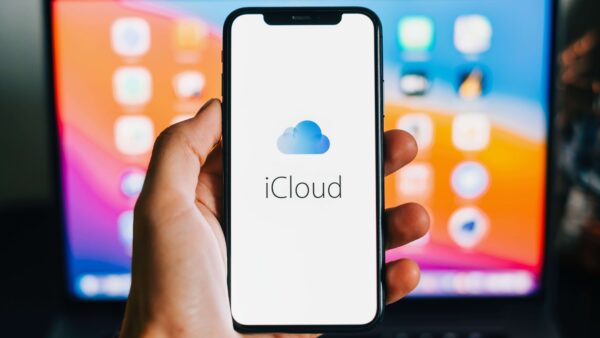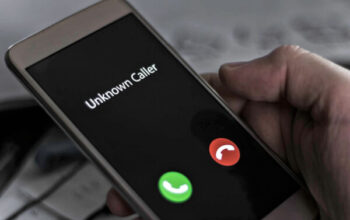Are you looking for a step-by-step guide on how to sign into iCloud Mail? Look no further! In this article, we will walk you through the process of accessing your iCloud Mail account seamlessly. Whether you’re using a computer or a mobile device, we’ve got you covered. So, let’s dive in and explore the various methods you can use to sign into iCloud Mail.
iCloud Mail is a free email service provided by Apple, integrated with the iCloud suite of online services. It allows users to send, receive, and manage their emails using an @icloud.com email address. To access your iCloud Mail account, you need to sign in with your Apple ID and password. In the following sections, we will guide you through the sign-in process on both computers and mobile devices.
Signing into iCloud Mail on a Computer
1. Using a Web Browser
To sign into iCloud Mail using a web browser, follow these steps:
- Open your preferred web browser (e.g., Google Chrome, Safari).
- Go to the iCloud website by entering “www.icloud.com” in the address bar.
- Enter your Apple ID and password in the respective fields.
- Click on the arrow or press Enter to proceed.
- If prompted, complete the two-factor authentication process.
- Once signed in, you will be redirected to the iCloud Mail interface.
2. Using the Mail App on macOS
If you’re using a Mac computer, you can access your iCloud Mail account using the Mail app. Here’s how:
- Open the Mail app on your Mac.
- From the menu bar, click on “Mail” and select “Add Account.”
- Choose “iCloud” from the list of email service providers.
- Enter your Apple ID and password.
- Click on “Set Up” and wait for the Mail app to configure your account.
- Once the setup is complete, your iCloud Mail account will be accessible through the Mail app.
3. Using Microsoft Outlook on Windows
If you prefer using Microsoft Outlook on your Windows computer, you can add your iCloud Mail account to it. Follow these steps:
- Open Microsoft Outlook on your Windows computer.
- Click on “File” in the menu bar and select “Add Account.”
- Enter your iCloud email address and click on “Connect.”
- Provide your Apple ID and password when prompted.
- Complete the authentication process if necessary.
Once verified, Outlook will start syncing your iCloud Mail account.
Signing into iCloud Mail on a Mobile Device
1. Using the Mail App on iPhone or iPad
To sign into iCloud Mail on your iPhone or iPad, follow these instructions:
- Open the “Settings” app on your device.
- Scroll down and tap on “Mail” or “Passwords & Accounts,” depending on your iOS version.
- Select “Add Account” or “Add Mail Account.”
- Choose “iCloud” from the list of email providers.
- Enter your iCloud email address and password.
- Tap “Next” and wait for the verification process to complete.
- Once verified, your iCloud Mail account will be added to the Mail app.
2. Using the Mail App on Android
While iCloud Mail is primarily designed for Apple devices, you can still access it on your Android device using the Mail app. Here’s how:
- Install a mail app that supports iCloud Mail on your Android device (e.g., Microsoft Outlook, BlueMail).
- Open the mail app and select “Add Account” or “Add Email Account.”
- Enter your iCloud email address and password.
- Follow the on-screen instructions to complete the setup process.
- Once set up, you can start using the mail app to access your iCloud Mail account.
3. Using Third-Party Email Apps
Apart from the built-in Mail apps, you can also use third-party email apps to access your iCloud Mail account. Popular email apps like Microsoft Outlook, Gmail, and Spark allow you to add iCloud Mail as an additional account. Simply download and install the app from your device’s app store, and follow the app-specific instructions to add your iCloud Mail account.
Troubleshooting Tips
Encountering issues while signing into iCloud Mail? Here are some common troubleshooting tips:
1. Forgot Apple ID or Password
If you can’t remember your Apple ID or password, you can recover them using the Apple ID account recovery process. Visit the Apple ID website and follow the instructions to regain access to your account.
2. Two-Factor Authentication
Two-factor authentication provides an extra layer of security for your iCloud Mail account. Make sure you have access to the trusted devices associated with your Apple ID. If you’re unable to receive the verification code, check if you have a backup phone number or a trusted friend who can help you retrieve the code.
3. App-Specific Passwords
Some third-party apps may require an app-specific password to access your iCloud Mail account. If you encounter such a prompt, generate an app-specific password from your Apple ID account settings and use it to sign in.
Conclusion
In conclusion, signing into iCloud Mail is a straightforward process that can be done through web browsers, Mail apps on computers, and various mobile devices. By following the steps provided in this guide, you can access your iCloud Mail account hassle-free and stay connected with your emails.
FAQs
FAQ 1: Can I use iCloud Mail on non-Apple devices?
Yes, you can access iCloud Mail on non-Apple devices by using the web browser or third-party email apps that support iCloud Mail.
FAQ 2: Can I have multiple iCloud Mail accounts?
Yes, you can create and use multiple iCloud Mail accounts using different Apple IDs.
FAQ 3: Is iCloud Mail storage limited?
Yes, iCloud Mail provides a limited amount of storage for your emails, attachments, and other iCloud services. If you exceed the storage limit, you may need to upgrade your iCloud storage plan.
FAQ 4: Can I access iCloud Mail offline?
Yes, you can enable offline access to your iCloud Mail account through certain mail apps. However, ensure that you have synced your account while connected to the internet before going offline.
FAQ 5: Can I forward my iCloud emails to another email address?
Yes, you can set up email forwarding in iCloud Mail settings to automatically forward your incoming emails to another email address.




